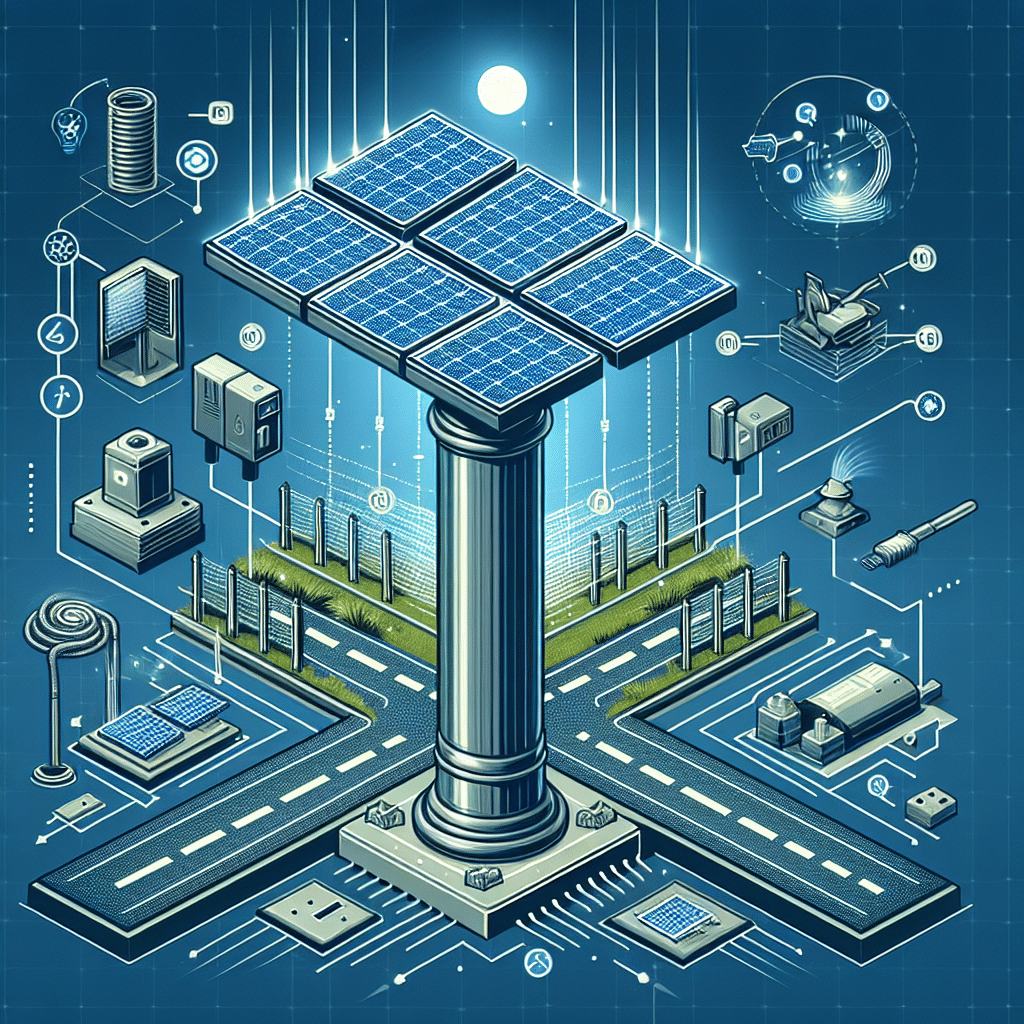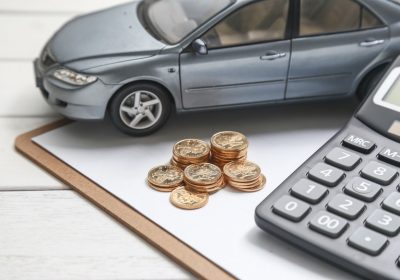Maintenance and Durability of Solar Bollards
-
Table of Contents
Solar bollards are increasingly popular in outdoor lighting due to their energy efficiency, environmental benefits, and ease of installation. However, to ensure their long-term functionality and performance, it is crucial to focus on their maintenance and durability. Proper maintenance involves regular cleaning of solar panels, checking for any damage or wear, and ensuring that the batteries and LED lights are functioning correctly. Durability, on the other hand, is influenced by the quality of materials used, weather resistance, and the robustness of the design. High-quality solar bollards are typically constructed from durable materials such as stainless steel or aluminum and are designed to withstand harsh environmental conditions, including extreme temperatures, moisture, and UV exposure. By prioritizing both maintenance and durability, solar bollards can provide reliable and sustainable lighting solutions for many years.
Best Practices for Maintaining Solar Bollards
Why is Regular Cleaning Important for Solar Bollards?
Solar bollards, increasingly popular for their energy efficiency and environmental benefits, require proper maintenance to ensure their longevity and optimal performance. To begin with, regular cleaning is essential. Dust, dirt, and debris can accumulate on the solar panels, obstructing sunlight and reducing the efficiency of energy absorption. It is advisable to clean the panels with a soft cloth and mild detergent, avoiding abrasive materials that could scratch the surface. This simple yet effective practice can significantly enhance the bollards’ energy collection capabilities.
How Should Solar Bollards Be Inspected for Physical Damage?
In addition to cleaning, inspecting the solar bollards for any physical damage is crucial. Over time, exposure to the elements can cause wear and tear. Regularly checking for cracks, chips, or other signs of damage can help in identifying issues early on. If any damage is detected, it is important to address it promptly to prevent further deterioration. For instance, replacing a cracked solar panel or fixing a loose connection can prevent more extensive repairs in the future.
Why is Secure Anchoring Vital for Solar Bollards?
Ensuring that the bollards are securely anchored is vital for their stability and functionality. Loose or unstable bollards can not only be a safety hazard but also affect the alignment of the solar panels, thereby impacting their efficiency. Periodic checks to confirm that the bollards are firmly in place can mitigate such risks. If any instability is noticed, it should be rectified immediately, either by tightening the fixtures or re-anchoring the bollards as necessary.
How Can One Monitor Battery Performance in Solar Bollards?
Another key aspect of maintaining solar bollards is monitoring their battery performance. The batteries store the energy collected by the solar panels and power the lights during nighttime. Over time, batteries can degrade, leading to reduced performance or complete failure. It is recommended to check the battery status regularly and replace them as needed. Using high-quality, compatible batteries can also extend the lifespan of the solar bollards and ensure consistent performance.
What Should Be Done If the Lighting Output of Bollards Is Diminished?
Moreover, it is beneficial to keep an eye on the lighting output of the bollards. Dimming or flickering lights can indicate underlying issues such as battery problems, faulty wiring, or malfunctioning LEDs. Addressing these issues promptly can prevent further complications and maintain the bollards’ effectiveness. In some cases, it may be necessary to consult a professional to diagnose and fix more complex problems.
How Can Seasonal Maintenance Impact Solar Bollards?
Seasonal maintenance is another important consideration. For instance, during winter months, snow and ice can cover the solar panels, obstructing sunlight and reducing energy absorption. Regularly clearing snow and ice from the panels can help maintain their efficiency. Similarly, during autumn, falling leaves can accumulate on the panels, necessitating frequent cleaning.
What Are the Best Practices for Maintaining Solar Bollards?
In conclusion, the maintenance and durability of solar bollards depend on a combination of regular cleaning, physical inspections, secure anchoring, battery monitoring, and seasonal adjustments. By adhering to these best practices, one can ensure that solar bollards remain functional, efficient, and durable over the long term. This not only maximizes the return on investment but also contributes to sustainable and eco-friendly lighting solutions. Therefore, a proactive approach to maintenance is essential for the optimal performance and longevity of solar bollards.
Enhancing the Durability of Solar Bollards in Harsh Weather Conditions

What Makes Solar Bollards a Valuable Addition to Outdoor Spaces?
Solar bollards, increasingly popular for their energy efficiency and environmental benefits, are a valuable addition to outdoor spaces. However, their durability in harsh weather conditions is a critical factor that determines their long-term functionality and cost-effectiveness. To enhance the durability of solar bollards, it is essential to consider several key aspects, including material selection, design features, and maintenance practices.
How Does Material Selection Affect the Durability of Solar Bollards?
Firstly, the choice of materials plays a pivotal role in the resilience of solar bollards. High-quality materials such as stainless steel, aluminum, and polycarbonate are preferred due to their resistance to corrosion, impact, and UV radiation. Stainless steel, for instance, offers excellent resistance to rust and can withstand extreme temperatures, making it ideal for coastal areas with high salinity. Aluminum, being lightweight yet robust, provides a good balance between strength and ease of installation. Polycarbonate, known for its high impact resistance and transparency, is often used for the protective casing of solar panels, ensuring they remain functional even in adverse weather conditions.
How Do Design Features Influence the Durability of Solar Bollards?
In addition to material selection, the design of solar bollards significantly influences their durability. A well-designed solar bollard should incorporate features that protect its internal components from moisture, dust, and physical damage. For example, a sealed housing unit can prevent water ingress, which is crucial in regions prone to heavy rainfall or snow. Moreover, the integration of a drainage system can help manage water accumulation around the base, reducing the risk of corrosion and electrical failures. The use of tamper-resistant screws and reinforced mounting systems can further enhance the bollard’s ability to withstand vandalism and accidental impacts.
What Advanced Technologies Enhance the Durability of Solar Bollards?
Furthermore, the incorporation of advanced technologies can also contribute to the durability of solar bollards. Modern solar bollards often come equipped with smart sensors and control systems that optimize energy usage and extend battery life. These systems can adjust the brightness of the LED lights based on ambient light levels, ensuring efficient energy consumption and reducing the frequency of battery replacements. Additionally, the use of high-capacity lithium-ion batteries, known for their long lifespan and reliability, can significantly enhance the overall durability of the solar bollard.
Why is Regular Maintenance Crucial for the Longevity of Solar Bollards?
Regular maintenance is another crucial factor in ensuring the longevity of solar bollards. Routine inspections should be conducted to check for any signs of wear and tear, such as cracks, corrosion, or loose connections. Cleaning the solar panels periodically is essential to maintain their efficiency, as dirt and debris can obstruct sunlight and reduce energy absorption. In regions with heavy snowfall, it is important to clear snow accumulation around the bollards to prevent damage and ensure proper functioning. Moreover, replacing worn-out components, such as batteries and LED lights, in a timely manner can prevent more significant issues and extend the lifespan of the bollards.
In conclusion, enhancing the durability of solar bollards in harsh weather conditions requires a comprehensive approach that includes selecting high-quality materials, incorporating robust design features, leveraging advanced technologies, and implementing regular maintenance practices. By addressing these aspects, it is possible to ensure that solar bollards remain functional and efficient over the long term, providing reliable illumination and contributing to sustainable outdoor lighting solutions. As the demand for eco-friendly lighting options continues to grow, investing in durable solar bollards will not only yield economic benefits but also support environmental conservation efforts.
Common Issues and Solutions for Prolonging the Life of Solar Bollards
Solar bollards, increasingly popular for their energy efficiency and environmental benefits, are a valuable addition to outdoor spaces. However, like any outdoor equipment, they are subject to wear and tear. Understanding common issues and implementing effective solutions can significantly prolong the life of solar bollards, ensuring they remain functional and aesthetically pleasing for years to come.
One prevalent issue with solar bollards is the accumulation of dirt and debris on the solar panels. This buildup can obstruct sunlight, reducing the efficiency of the solar cells and, consequently, the bollard’s illumination. Regular cleaning of the solar panels is essential to maintain optimal performance. Using a soft cloth and mild detergent, gently wipe the panels to remove any dirt or grime. It is advisable to perform this cleaning routine at least once a month, or more frequently in areas with high levels of dust or pollution.
Another common problem is water ingress, which can damage the internal components of the bollard. Ensuring that the bollards are properly sealed is crucial to prevent water from entering. Inspect the seals and gaskets periodically for any signs of wear or damage. If any issues are detected, replace the seals promptly to maintain the bollard’s waterproof integrity. Additionally, installing bollards with a high IP (Ingress Protection) rating can provide extra assurance against water and dust penetration.
Battery degradation is another factor that can affect the longevity of solar bollards. Over time, the rechargeable batteries that store solar energy may lose their capacity, leading to reduced lighting duration. To address this, it is important to use high-quality batteries and replace them as needed. Typically, batteries should be replaced every two to three years, depending on usage and environmental conditions. Monitoring the performance of the bollards can help identify when battery replacement is necessary.
Furthermore, physical damage from external forces such as vandalism or accidental impacts can compromise the functionality of solar bollards. To mitigate this risk, consider installing bollards made from durable materials such as stainless steel or reinforced plastic. These materials offer greater resistance to impact and can withstand harsh weather conditions. Additionally, placing bollards in strategic locations where they are less likely to be struck by vehicles or other objects can help reduce the likelihood of damage.
In addition to these preventive measures, regular maintenance checks are vital for ensuring the longevity of solar bollards. Conducting routine inspections allows for the early detection of potential issues, enabling timely repairs and replacements. During these inspections, check for any signs of corrosion, loose connections, or malfunctioning components. Addressing these problems promptly can prevent further damage and extend the life of the bollards.
Moreover, it is important to consider the environmental factors that can affect the performance of solar bollards. For instance, areas with heavy snowfall may require additional maintenance to clear snow from the solar panels, ensuring they receive adequate sunlight. Similarly, in regions with extreme temperatures, it is essential to use components that can withstand such conditions without compromising performance.
In conclusion, the maintenance and durability of solar bollards depend on a combination of regular cleaning, proper sealing, battery management, and protection against physical damage. By implementing these solutions and conducting routine inspections, the lifespan of solar bollards can be significantly extended, providing reliable and sustainable lighting for outdoor spaces. Through diligent care and attention, solar bollards can continue to offer their benefits, contributing to energy efficiency and environmental conservation.
Read more about Solar Bollards:
- Introduction to Solar Bollards
- How Do Solar Bollards Work?
- Design and Aesthetics of Solar Bollards
- Applications of Solar Bollards
- Choosing the Right Solar Bollard for Your Needs
- Installation and Wiring of Solar Bollards
- Integration of Solar Bollards with Smart Technology
- Comparison of Solar Bollards with Traditional Lighting Solutions
- Regulations and Standards for Solar Bollards








